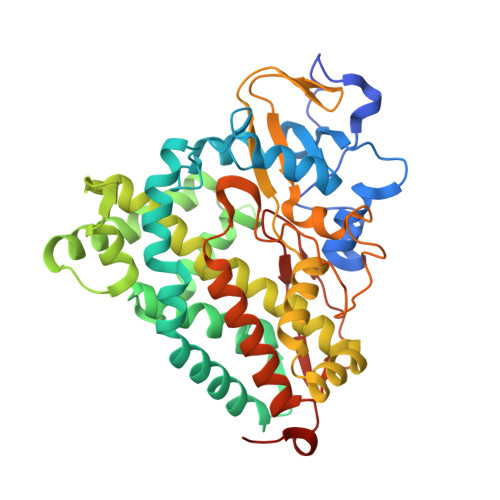Alteration of P450 Distal Pocket Solvent Leads to Impaired Proton Delivery and Changes in Heme Geometry.
Makris, T.M., Koenig, K.V., Schlichting, I., Sligar, S.G.(2007) Biochemistry 46: 14129-14140
- PubMed: 18001135
- DOI: https://doi.org/10.1021/bi7013695
- Primary Citation of Related Structures:
2QBL, 2QBM, 2QBN, 2QBO - PubMed Abstract:
Distal pocket water molecules have been widely implicated in the delivery of protons required in O-O bond heterolysis in the P450 reaction cycle. Targeted dehydration of the cytochrome P450cam (CYP101) distal pocket through mutagenesis of a distal pocket glycine to either valine or threonine results in the alteration of spin state equilibria, and has dramatic consequences on the catalytic rate, coupling efficiency, and kinetic solvent isotope effect parameters, highlighting an important role of the active-site hydration level on P450 catalysis. Cryoradiolysis of the mutant CYP101 oxyferrous complexes further indicates a specific perturbation of proton-transfer events required for the transformation of ferric-peroxo to ferric-hydroperoxo states. Finally, crystallography of the 248Val and 248Thr mutants in both the ferric camphor bound resting state and ferric-cyano adducts shows both the alteration of hydrogen-bonding networks and the alteration of heme geometry parameters. Taken together, these results indicate that the distal pocket microenvironment governs the transformation of reactive heme-oxygen intermediates in P450 cytochromes.
Organizational Affiliation:
Department of Biochemistry, University of Illinois Urbana-Champaign, Urbana, Illinois 61801, USA.


















